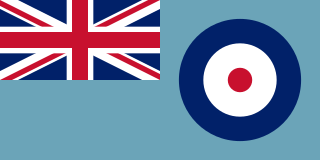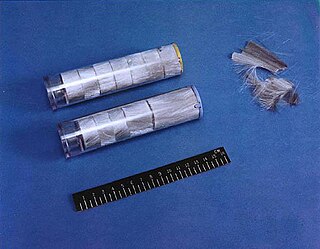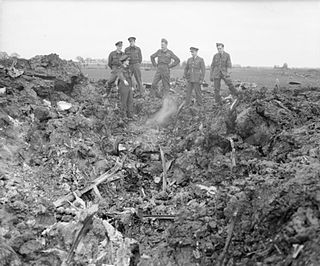
Fighter aircraft are military aircraft designed primarily for air-to-air combat. In military conflict, the role of fighter aircraft is to establish air superiority of the battlespace. Domination of the airspace above a battlefield permits bombers and attack aircraft to engage in tactical and strategic bombing of enemy targets, and helps prevent the enemy from doing the same.

A night fighter is a largely historical term for a fighter or interceptor aircraft adapted or designed for effective use at night, during periods of adverse meteorological conditions, or in otherwise poor visibility. Such designs were in direct contrast to day fighters: fighters and interceptors designed primarily for use during the day or during good weather. The concept of the night fighter was developed and experimented with during the First World War but would not see widespread use until WWII. The term would be supplanted by “all-weather fighter/interceptor” post-WWII, with advancements in various technologies permitting the use of such aircraft in virtually all conditions.

A surface-to-air missile (SAM), also known as a ground-to-air missile (GTAM) or surface-to-air guided weapon (SAGW), is a missile designed to be launched from the ground or the sea to destroy aircraft or other missiles. It is one type of anti-aircraft system; in modern armed forces, missiles have replaced most other forms of dedicated anti-aircraft weapons, with anti-aircraft guns pushed into specialized roles.

Schräge Musik was a common name for the fitting of an upward-firing autocannon or machine gun, to an interceptor aircraft, such as a night fighter. The term was introduced by the German Luftwaffe during World War II. "Schräge Musik" was previously a German colloquialism, meaning music that featured an unusual tuning and/or time signature. The standard usage of the adjective schräg is often translated as "slanting" or "oblique", but its slang usage is often translated as "weird" or "strange".

An electronic countermeasure (ECM) is an electrical or electronic device designed to trick or deceive radar, sonar, or other detection systems, like infrared (IR) or lasers. It may be used both offensively and defensively to deny targeting information to an enemy. The system may make many separate targets appear to the enemy, or make the real target appear to disappear or move about randomly. It is used effectively to protect aircraft from guided missiles. Most air forces use ECM to protect their aircraft from attack. It has also been deployed by military ships and recently on some advanced tanks to fool laser/IR guided missiles. It is frequently coupled with stealth advances so that the ECM systems have an easier job. Offensive ECM often takes the form of jamming. Self-protecting (defensive) ECM includes using blip enhancement and jamming of missile terminal homers.

No. 100 Group was a special duties group within RAF Bomber Command. The group was formed on 11 November 1943 to consolidate the increasingly complex business of electronic warfare and countermeasures in one organisation. The group was responsible for the development, operational trial and use of electronic warfare and countermeasures equipment. It was based at RAF stations in East Anglia, chiefly Norfolk.

Ground-controlled interception (GCI) is an air defence tactic whereby one or more radar stations or other observational stations are linked to a command communications centre which guides interceptor aircraft to an airborne target. This tactic was pioneered during World War I by the London Air Defence Area organization, which became the Royal Air Force's Dowding system in World War II, the first national-scale system. The Luftwaffe introduced similar systems during the war, but most other combatants did not suffer the same threat of air attack and did not develop complex systems like these until the Cold War era.

Chaff, originally called Window or Düppel, is a radar countermeasure involving the dispersal of thin strips of aluminium, metallized glass fiber, or plastic. Dispersed chaff produces a large radar cross section intended to blind or disrupt radar systems.

A tail gunner or rear gunner is a crewman on a military aircraft who functions as a gunner defending against enemy fighter or interceptor attacks from the rear, or "tail", of the plane.
Serrate was a World War II Allied radar detection and homing device that was used by night fighters to track Luftwaffe night fighters equipped with the earlier UHF-band BC and C-1 versions of the Lichtenstein radar. It allowed RAF night fighters to attack their German counterparts, disrupting their attempts to attack the RAF's bomber force.
The Rainbow Codes were a series of code names used to disguise the nature of various British military research projects. They were mainly used by the Ministry of Supply from the end of the Second World War until 1958, when the ministry was broken up and its functions distributed among the forces. The codes were replaced by an alphanumeric code system, consisting of two letters followed by three digits.

Operation Diver was the British code name for the V-1 flying bomb campaign launched by the German Luftwaffe in 1944 against London and other parts of Britain. Diver was the code name for the V-1, against which the defence consisted of anti-aircraft guns, barrage balloons and fighter aircraft.

Operation Steinbock or Operation Capricorn, sometimes called the Baby Blitz or Little Blitz, was a strategic bombing campaign by the German Air Force during the Second World War. It targeted southern England and lasted from January to May 1944. Steinbock was the last strategic air offensive by the German bomber arm during the conflict.

The Defence of the Reich is the name given to the strategic defensive aerial campaign fought by the Luftwaffe of Nazi Germany over German-occupied Europe and Germany during World War II against the Allied strategic bombing campaign. Its aim was to prevent the destruction of German civilians, military and civil industries by the Western Allies. The day and night air battles over Germany during the war involved thousands of aircraft, units and aerial engagements to counter the Allies bombing campaigns. The campaign was one of the longest in the history of aerial warfare and with the Battle of the Atlantic and the Allied naval blockade of Germany was the longest of the war. The Luftwaffe fighter force defended the airspace of German-occupied Europe against attack, first by RAF Bomber Command and then against the RAF and United States Army Air Forces (USAAF) in the Combined Bomber Offensive.
Nachtjagdgeschwader 1 (NJG 1) was a German Luftwaffe night fighter-wing of World War II. NJG 1 was formed on 22 June 1940 and comprised four Gruppen (groups). NJG 1 was created as an air defence unit for the Defence of the Reich campaign; an aerial war waged by the Luftwaffe against the bombing of the German Reich by RAF Bomber Command and the United States Air Force. In 1941 airborne radar was introduced with radar operators, and standardised in 1942 and 1943. Consequently, a large number of German night fighter aces existed within NJG 1.

Operation Gisela was the codename for a German military operation of the Second World War. Gisela was designed as an aerial intruder operation to support the German air defence system in its night battles with RAF Bomber Command during the Defence of the Reich campaign. It was the last big operation launched by the Luftwaffe Nachtjagdgeschwader during the conflict.

Radar, Aircraft Interception, Mark VIII, or AI Mk. VIII for short, was the first operational microwave-frequency air-to-air radar. It was used by Royal Air Force night fighters from late 1941 until the end of World War II. The basic concept, using a moving parabolic antenna to search for targets and track them accurately, remained in use by most airborne radars well into the 1980s.

Aircraft interception radar, or AI radar for short, is a British term for radar systems used to equip aircraft with the means to find and track other flying aircraft. These radars are used primarily by Royal Air Force (RAF) and Fleet Air Arm night fighters and interceptors for locating and tracking other aircraft, although most AI radars could also be used in a number of secondary roles as well. The term was sometimes used generically for similar radars used in other countries, notably the US. AI radar stands in contrast with ASV radar, whose goal is to detect ships and other sea-suface vessels, rather than aircraft; both AI and ASV are often designed for airborne use.

The AMES Type 80, sometimes known by its development rainbow code Green Garlic, was a powerful early warning (EW) and ground-controlled interception (GCI) radar developed by the Telecommunications Research Establishment (TRE) and built by Decca for the Royal Air Force (RAF). It could reliably detect a large fighter or small bomber at ranges over 210 nautical miles, and large, high-flying aircraft were seen out to the radar horizon. It was the primary military ground-based radar in the UK from the mid-1950s into the late 1960s, providing coverage over the entire British Isles.














